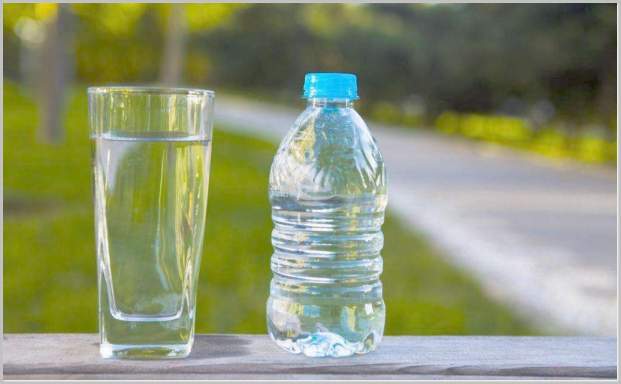
Water with its impurities removed is not the same as water from an underground source that flows out of the ground naturally. One is a process and the other is a source. Purification is removing impurities from water and that is a process; water from the spring is a source of water. Yet spring water may also be impure; before it can be labeled as such it must first be tested.
Why then is it necessary to distinguish one from the other? The labeling of bottled water makes this a frequently asked question that must be answered for the consuming public.
Which is better health wise? That depends on the varying circumstances under which the two kinds of water are bottled. Years ago, before the commercialization of water it would have been a question only a camper or a hiker would have asked. Should they drop in a water purifying tablet in their jug or drink from the flowing spring. No one else then would’ve been buying water; it would be offered free from the spigot, from a drawn bucket of water from a well or siphoned off from a flowing spring.
Commercial bottled water is the source of income today for many suppliers as well as being a convenience for the consuming public. It’s general knowledge that water springing from underground water reservoirs out of a vast underground reserve is pure, as compared to polluted lakes, creeks, and other sources of standing water. Once that was the problem facing decision makers, but today, people who don’t trust their water source, or who find carrying around a fresh supply of water convenient, buy their water.
How do they know what they are buying? Which of these two is better? The labeling is not accurate because most bottled water is believed to be spring water. It isn’t. The FDA (US Food and Drug Administration) has guidelines that identify bottled water into several different types.
Spring water
According to the FDA guidelines spring water is supposed to be from an underground source. It can either be collected at the spring or from a system where there is no intervention between this source and the containers. Regardless of how it is collected, it must be spring water. Water from this source is usually healthier because of the beneficial chemicals such as calcium fluoride and silica, which aids bones and teeth; but essentially it all depends on location of the spring. Not all contain these chemicals.
Purified water
Purified water has been distilled, deionized, or treated by reverse osmosis, or possibly by some other method of ridding the water of impurities. What this amounts to is ridding the water of bacteria and particles and assuring the consumer their water is safe to drink.
According to Aqua Zone, a water bottling company, purified simply means water that has been specially processed to remove impurities. It need not be any special source but the process of purification must have taken place. Therefore purified water comes from springs or from other sources. Spring water may have an advantage in possibly having other chemicals that make it a healthier choice. It all depends on the location of the water source.
The chemicals are not removed from spring water by purification nor are they added to purified water. Therefore the basic difference between spring water and purified water is the chemical element in the water from natural sources. Essentially, purification is a process of making any kind of water safe to drink. Spring water is one source of water out of many. It may or may not be healthier than any other water sources.
How then is one to know which type to buy? There are no guidelines; each consumer must decide that for themselves. If they believe that the chemicals in spring water are healthier, then that’s the better choice. If, on the other hand, they just want safe drinking water, why pay extra for spring water when regular tap water or regular bottled water will do? Depending on how safe the municipal water is, tap water may be just as effective.

